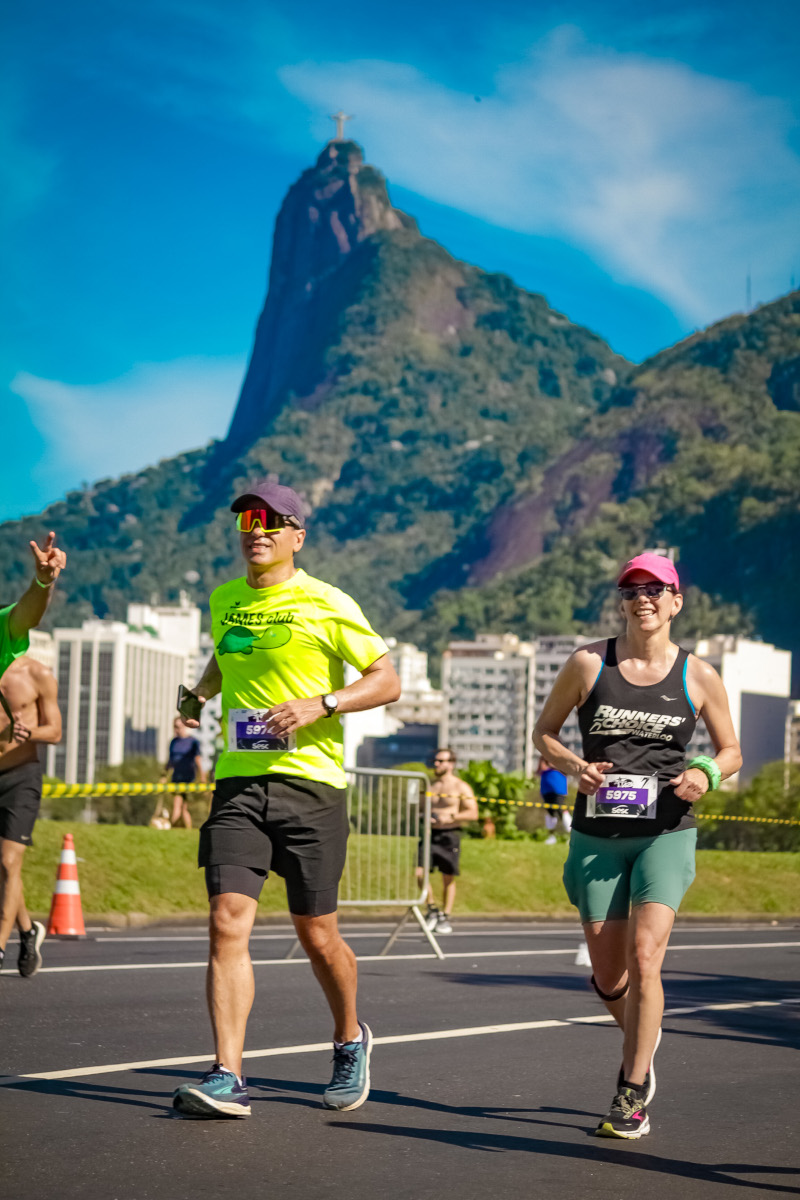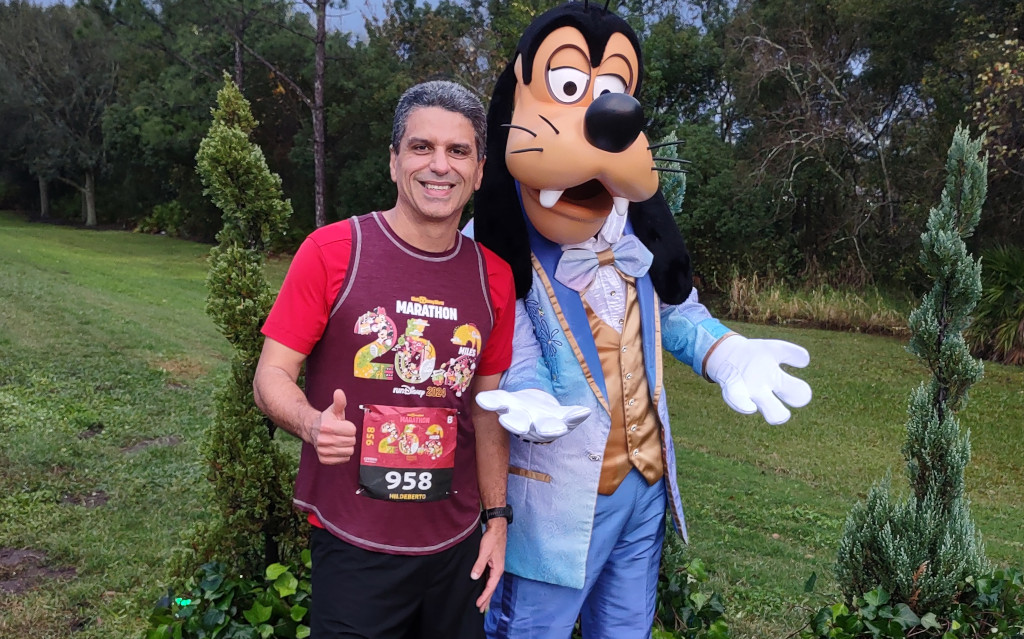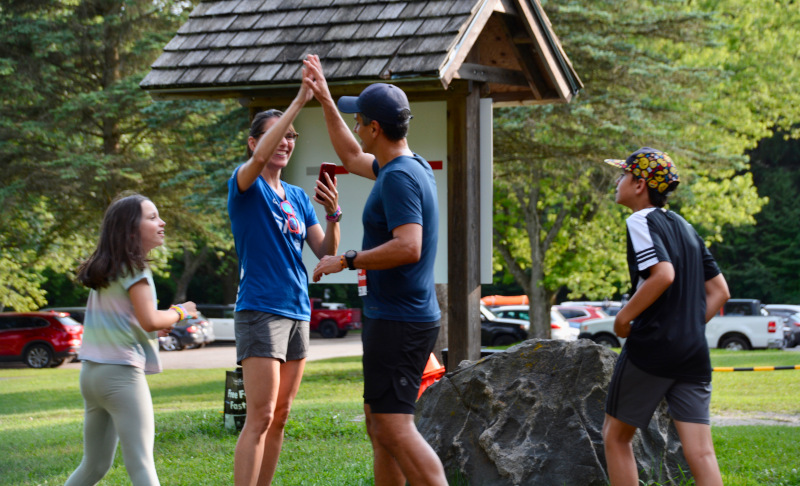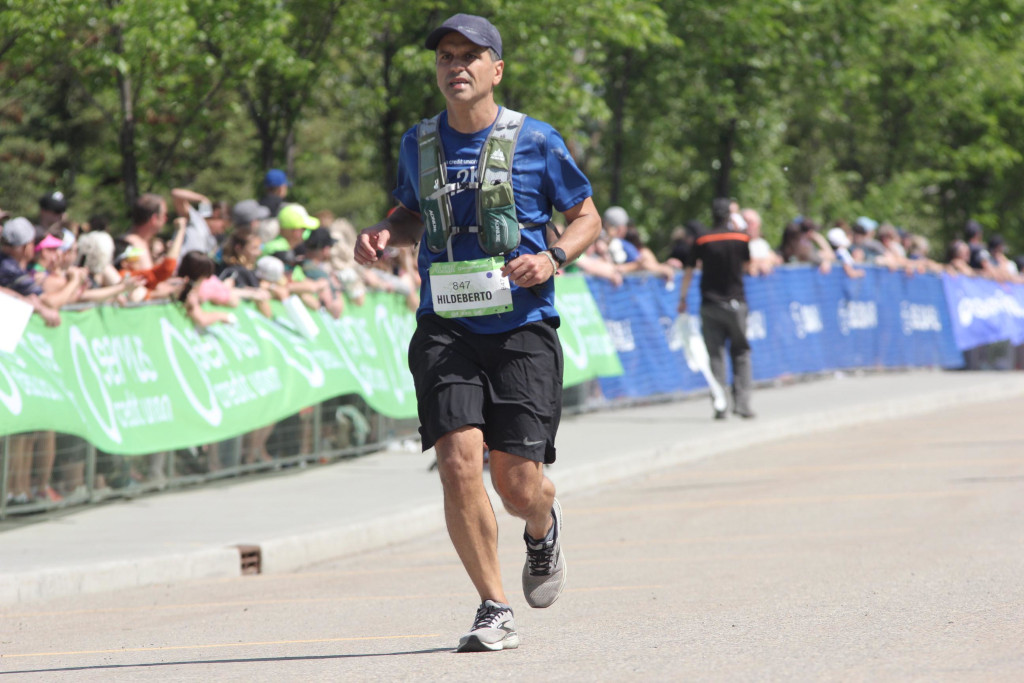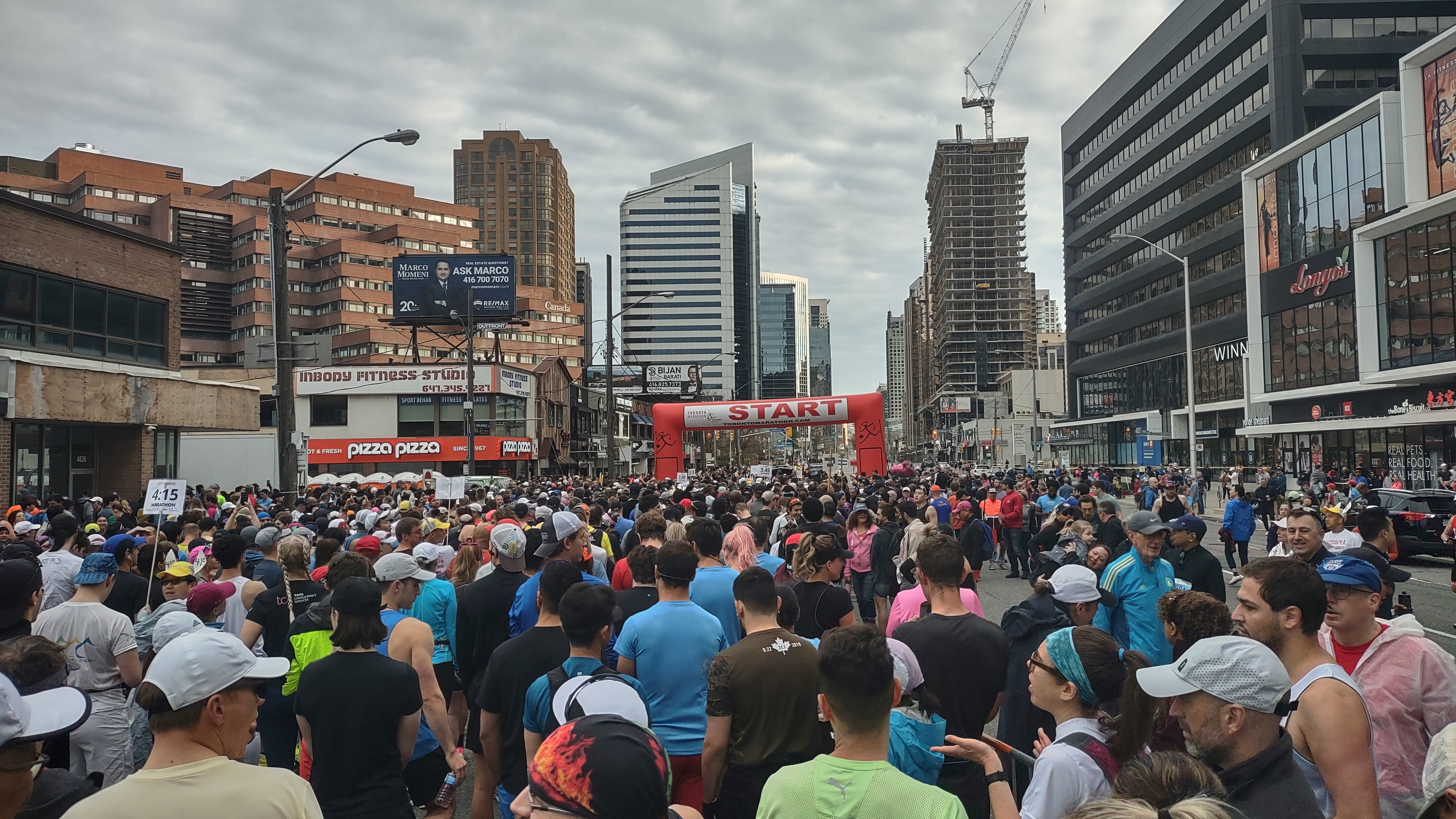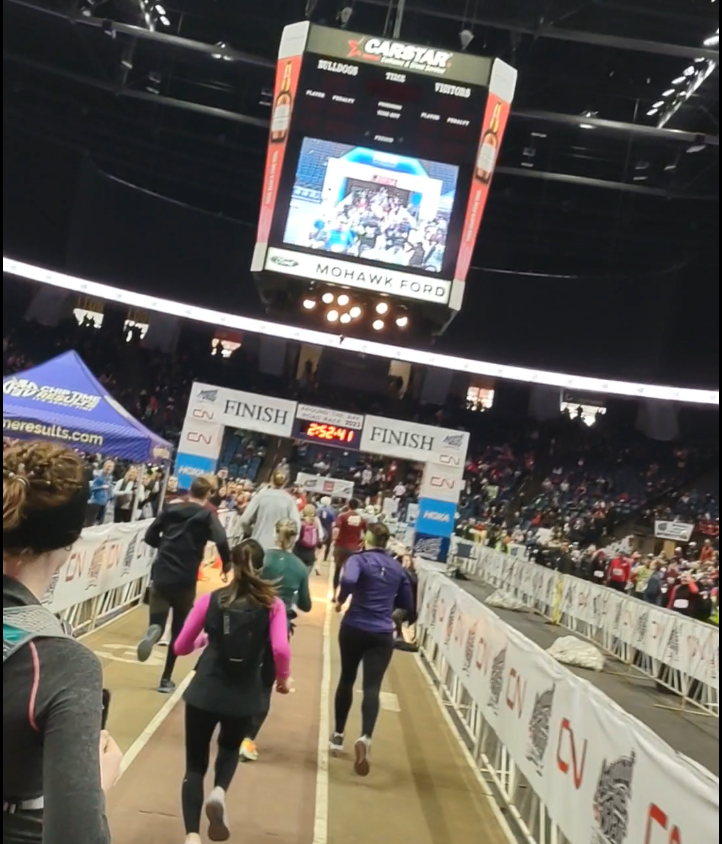Tales from A Water Station Far Far Away
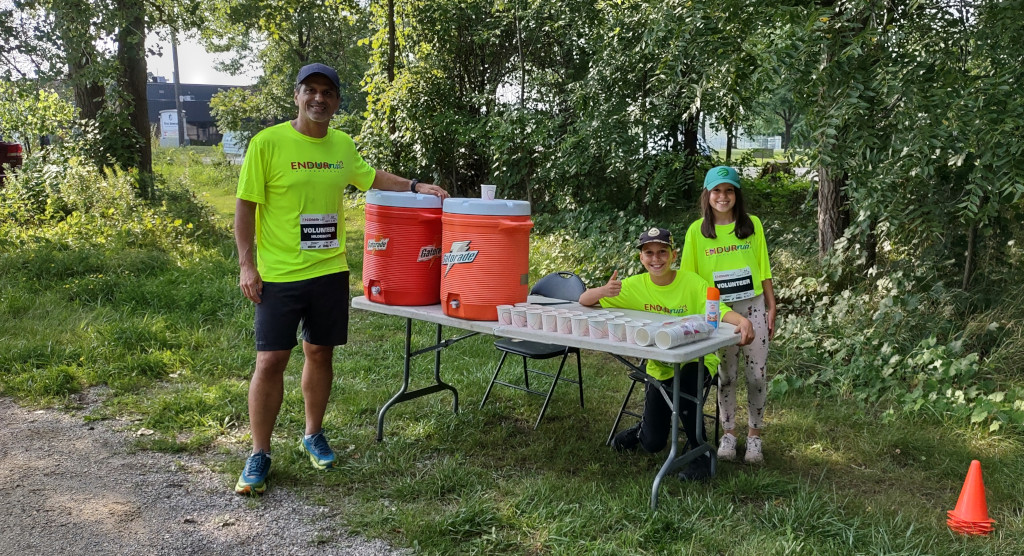
Running is the most collective among individual sports. There is a sense of community and mutual support rarely seen in other sports. When we go for a run with friends or in a race, we feel that we are not alone, that going through the same struggle actually reinforces our bounds.
The same phenomenon happens all around the running event. Those who organize, volunteer, and watch such events also feel bonded among themselves and to runners. They also have the privilege of observing the runners, feel their body language, cheer for them, expecting nothing in return, still willing to assist with anything they need. I like to say that a runner will only understand the true meaning of running when they experience a day as a racer, as a spectator, as a volunteer, and as a organizer.
My first experience as volunteer was at ENDURrun Ultimate 2023. I already shared my experience running ENDURrun Sport 2023. The ultimate edition is two times longer. It’s a multi-stage, full-week running event that demands a lot from everybody involved. I wanted to learn by closely observing what it takes to run 160km in one week, to see how runners felt at each stage, and how they put their strategy in place to win, to gain positions or simply finish it.
I brought my whole family to volunteer with me. They already accumulated some experience volunteering at the Sport edition, which happened a month earlier, so I could learn with them and make a great team to support the runners. Here are some of the tales from our water stations:
1. Most runners drink water, but the demand for Gatorade increases as the race gets tougher
I’ve seen some research showing that water is as effective as Gatorade on hydrating runners. I don’t know how they ran their experiments, but I believe the extra calories and the electrolytes in Gatorade’s formula helps in longer distances. Our water station offered both water and Gatorade, and we noticed that the most experienced runners prefer water while the other ones opted for Gatorade. But the curious fact is that, by the end of the race, all of them preferred Gatorade. Looks like the brain pushes us for more calories when things get tougher.
2. For those slow runners who take two cups, let me tell you a secret: elite runners do the same
The one thing that will keep you up and forward the whole time is a proper hydration. You may slow down when lacking calories, but you will certainly faint if you don’t have enough fluids in your body. You don’t want to over-hydrate either because it dilutes your electrolytes, which leads to fainting as well. That’s the reason why we serve cups just half filled. The best strategy is to listen to your body and drink when you are thirsty. Sometimes it means more than one cup in a visit to the water station, which is fine, but don’t be tolerant with your thirst. We can assure you the leaders of the race take as many cups as they need, so why wouldn’t you?
3. Some runners follow a ritual
Running is probably as much mental as it is physical. In a water station, we have plenty of time to observe runners, so we noticed that some runners keep the mind in sync with the body by following some ritual. We saw runners switching their cap back and forth after a lap, keeping their mouth closed the entire time, running in pairs, and even believing that the weight of a t-shirt would make a difference on the final time.
However, the one ritual I was expecting to see was runners washing their hands and face, but I couldn’t witness that. This is an evolutionary adaptation that humans acquired over thousands of years to cool down their bodies when exposed to high temperatures. We can observe it often in ultra trail races, specially when runners are crossing rivers, creeks or lakes. They instinctively wash their faces and hands, which have great volume of blood flowing under the skin, distributing the cold of the water throughout the body. It has the potential to improve the runner’s performance by 15%.
4. You think you are doing a great job until the middle of the pack hits you
I firmly believe that Gauss and Laplace were right about their normal distribution. If we take random people and put them to run together, a small number will be on the front, another small number will be on the back, and the vast majority will be on the middle. When we were in the water station, we forgot this theorem, and got completely overwhelmed when the middle of the pack reached us. We didn’t have enough cups already filled with liquids to serve so many people at the same time. Fortunately, that was just the first lap of the first day, so we learned quickly and adapted.
5. Eventually, we run out of water
It happened only once, but when it happened I was thankful for being an endurance athlete. It was in the last ENDURrun stage, the marathon. The race started when it was still dark and chilly, but the weather quickly shifted to warm and humid after the sunrise. Runners were profusely sweating, getting quickly thirsty, and consuming a lot of water and sports drink. We were never concerned, up to that point, about the availability of fluids, but we had a feeling that something was not right and decided to check how much water and Gatorade were left in the containers. Panic!!! The Gatorade level was still OK, but the water was almost empty, and we knew we had a lot of water “customers” coming up.
We were in the middle of the trail, surrounded by nature, 3 km from the start and 1 km from the nearest street. We had to notify the race director about our needs, pull a cart with the empty container for 1km, meet the support crew with a full container, and pull the cart back to the water station as fast as possible. And that’s what I did. Before leaving, we emptied the remaining water in cups to keep up with the demand while I was out. I ran so fast carrying that cart that I even passed all the runners ahead. I arrived just in time to prevent a supply disruption. I considered that moment as my water station graduation.
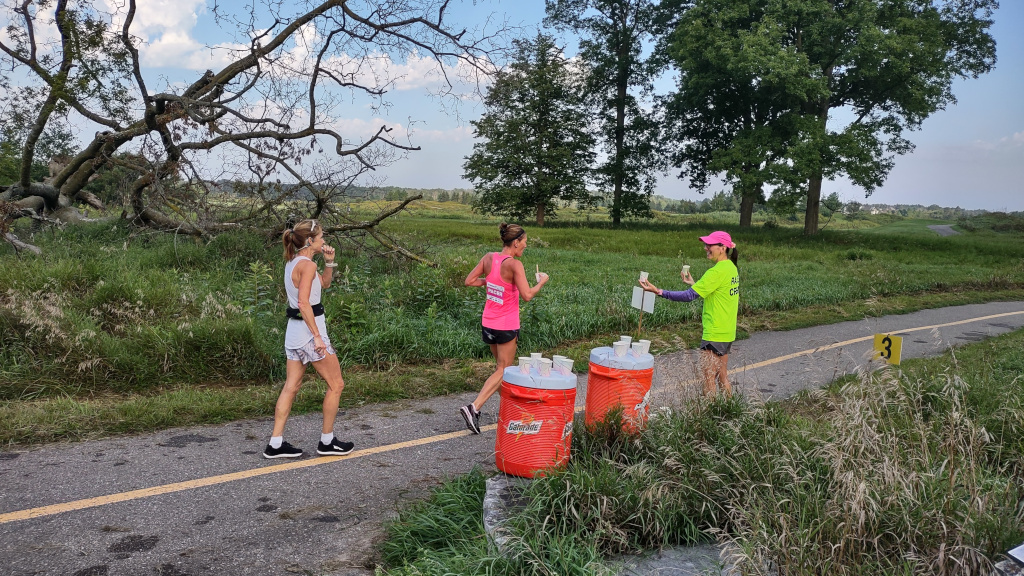
6. The Snake
The stage was 4. 10 miles hill run in the Walter Bean Trail. Part of the trail was closed for maintenance, forcing the organizers to change the course to a branch that linked the trail to the road. Our water station was positioned right at the turn of that branch, where they would grab a cup, make the turn around a big rock, drop the empty cup in a trash bin, and continue the loop.
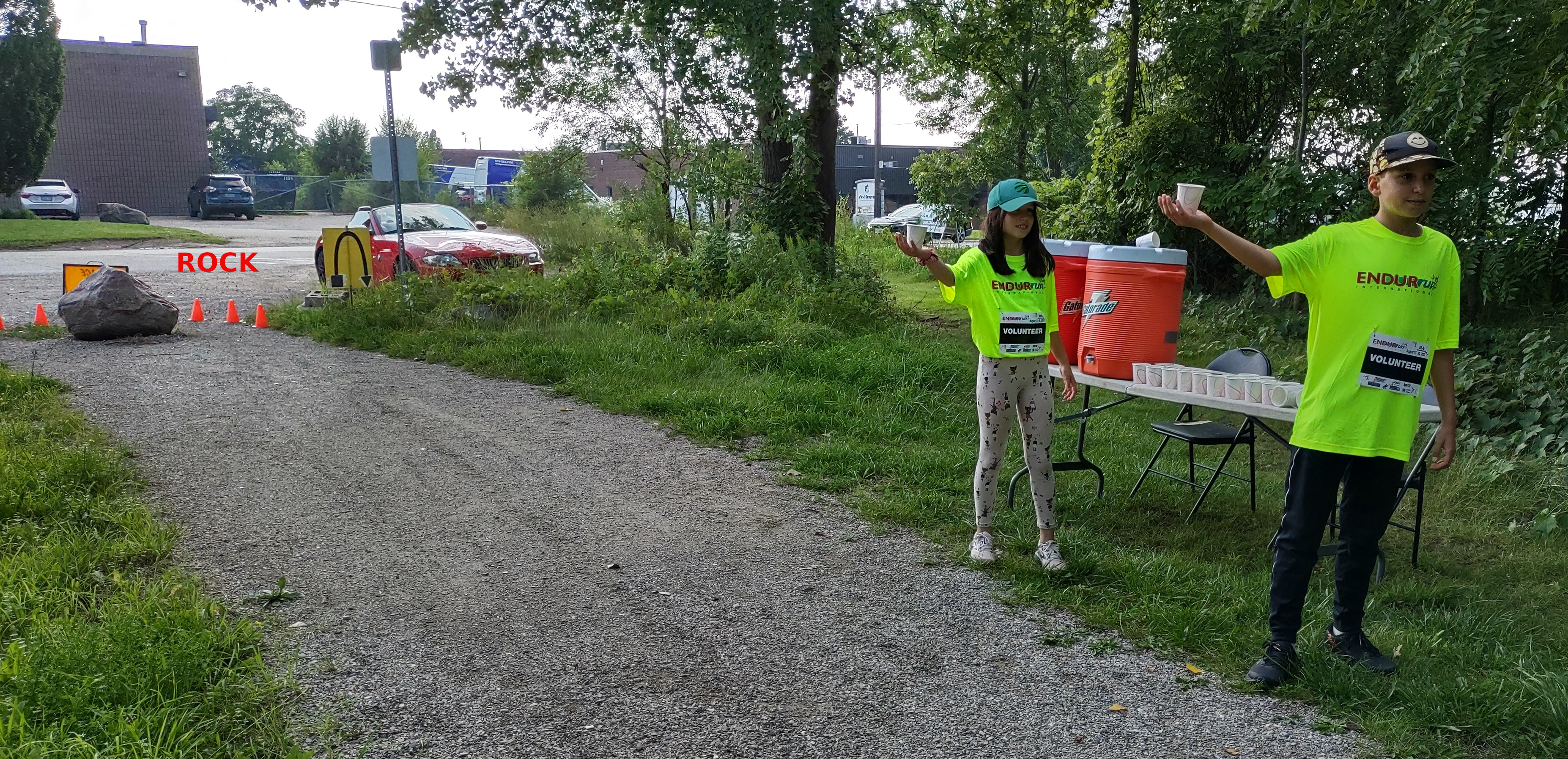
What the runners were not aware of was that there was a snake under that rock! We arrived at the spot right at the moment the snake sneaked under the rock. It stayed there for the rest of the race and all runners were less than a meter from it in 3 occasions.
I learned later that species is not venomous and would scare only those who have some sort of phobia.
7. A water station is surprisingly a great marketing opportunity
Some water stations operate in the middle of nowhere, completely out of context. People who pass by can’t help asking what is going on there, with all that setup and volunteers behaving like they were waiting for someone. We had to explain to them, repeating several times what was the race, the distance, the organizer, and everything else that could attract their interest. I know the number of people asking is insignificant compared to the current reach of the website and the email marketing, but if we had a small banner with the logo of the organization, then it would certainly help with the brand.
We all love running and racing, but if you ever find a reason to volunteer, because you need to rest from training, or because a loved one is racing, or even because you have an annoying injury, then do it! The races we love are only possible because of the help from people who love running as much as you do.
